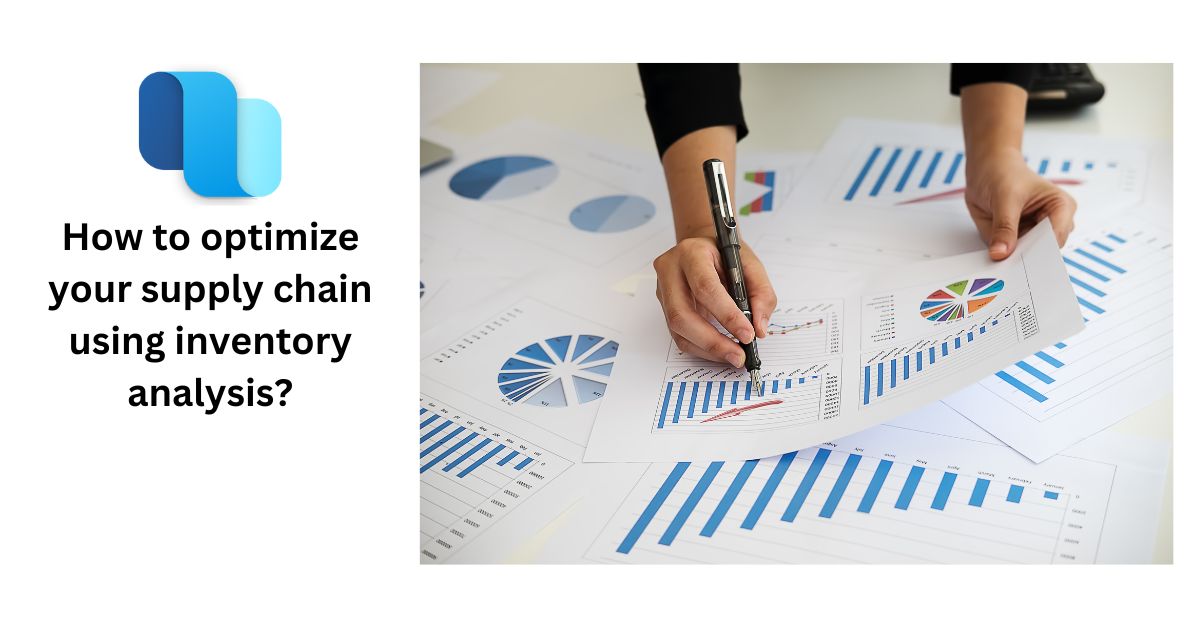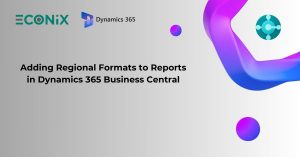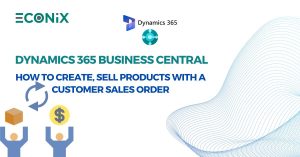How to optimize your supply chain using inventory analysis?

Today’s competitive world and having numerous supply chain issues arises after COVID-19 pandemic and war zones has forced the organizations to optimize their inventory irrespective of industry segment whether its manufacturing, traders, distributors, wholesales, retailers.
It is vital to learn how to manage inventory effectively because mistakes may have direct impact on your bottom line. Demand is growing even with high inflation rate across the globe especially in Northern America. Having robust business application in place which supports extensive inventory analysis on different aspects will help your organization to minimize lost sales, misplaced stock and excessive material ordering with inventory optimization will boosts your gross profits and can even reduce direct taxes and various indirect costs.
Let’s first understand what the prime difference between inventory management Vs. supply chain management is.
Inventory management is a key component of supply chain management and not the other way. Whereas supply chain management is a complete flow of items from raw materials to semi-finish to production processing till distribution of material in a typical manufacturing environment. Inventory management covers the activities like receiving, tracking, and sorting of materials been managed by a company. It provides an informative data for procurement as well.
Based on the level of your organization, inventory management and supply chain management processing vary. Supply chain management and inventory management is almost blended for a small enterprise. However larger businesses may have distinguished processes and guidelines supported by some business application.
Inventory optimization is not only a matter of concern for larger businesses but equally critical for smaller enterprises. We have enlisted following ways to optimize inventory management and improve order fulfillment.
Invest in management solution which supports real-time data.
This is the first step towards optimizing your inventory if your company doesn’t have a robust, scalable business management solution, like Microsoft Dynamics 365 Business Central or Microsoft Dynamics 365 Supply Chain Management, which supports real-time inventory levels.
This will provide an accurate overview of inventory at all stages of supply chain whether you are a manufacturer, retailer, trader, distributor, or wholesaler.
Business Central and Dynamics 365 Supply Chain Management has ability to process large volume of data required for forecasting, safety stock replenishment, master planning, and more. It has built in feature to execute inventory master planning either localized for a company, or for a warehouse, or for a specific item, or centralize for group of companies based on structure of an organization.
Working from a central platform will also create a unity of data and communication across the company. By storing information in a central database, sales and marketing teams will be aligned on any important changes to inventory, like increased orders due to promotions, discounts, campaigns, and other one-off events.
How to optimize your supply chain using inventory analysis?
Copilot in Microsoft Supply Chain Center, which Microsoft Dynamics 365 Supply Chain Management customers can access, will proactively flag external issues such as weather, financials and geography that may impact key supply chain processes. Predictive insights then surface impacted orders across materials, inventory, carrier, distribution network and more. Supply chain planners can then automatically draft an email generated by Dynamics 365 Copilot to alert impacted partners and mitigate potential disruptions before they happen.
LATEST INSIGHTS
-
Business Central customize pages for profiles
-
Adding Regional Formats to Reports in Dynamics 365 Business Central
-
Dynamics 365 Business Central – How to create Sell Products with a Customer Sales Order
-
Cash Flow in Dynamics Business Central Overview
-
Understand Location cards in D365 Business Central
REQUEST
FOR A CALL BACK
Provide discussion information and we’ll get back to you as soon as possible
Track entire supply chain not just parts or specific sections.
Those days have gone when difference elements of the supply chain would work independently and can survive without complete visibility.
Current scenario is entirely opposite to that. Manufacturers will often deliver real-time updates on production of materials, logistics companies will provide the exact location of stock during transportation cycle, and customer delivery services will tell you exactly when your goods have been delivered at customer’s end.
The eminent use of new technology, like mobile devices, handheld/ barcode scanners and tracking devices, contribute to this mix in a big way. The prime benefit is that you came across the problems as soon as they arise and implement contingencies quickly to avoid delay in supply chain.
Having a precise overview of the supply chain will enable you to make informed decisions about cost-cutting options like cross-docking and joint ordering from a supplier (very much popular for importing the goods).
Periodic revaluation of supply chain elements
Just planning of inventory is not sufficient but a holistic approach to review internal processes, performance of vendors, performance of logistics is a catalyst to retain the material cost under maintainable levels over a period is must.
When you know what items produce the most profit for your company, you’ll be more likely to confidently negotiate better terms with suppliers, improving your bottom line. Operating a business can drag you in a thousand directions, often pulling you away from the actions that make money. By analysing the inventory that keeps your company profitable, you can prioritise it, making the supply chain for that inventory as efficient as possible.
Based on the nature of your business and operating model, different types of inventory analysis methods might be applicable to you.
- ABC analysis
- VED analysis
- HML analysis
- SDE analysis
- Safety stock analysis
- Material requirement planning (MRP)
- FSN analysis
ABC Analysis
It is the most popular and widely adaptable inventory analysis method, which is based on Pareto Principle, which states 80/20 rule meaning 80% of effects arises from 20% of causes.
A (Always) – Inventory with highest value or generating highest profit margins or sales revenue.
B (Better) – inventory that you sell regularly but don’t carry much value as A inventory.
C (Control) – other inventory which doesn’t sell much and generate least revenue.
VED Analysis
VED stands for Vital (V) Essential (E) Desirable (D) and it is based on inventory value and criticalness to have the item in stock. Its different than ABC analysis and only takes into consideration how necessary an item is to continuing business operations and not based on the amount of inventory.
V (Vital) – inventory that must be in stock.
E (Essential) – an optimal amount of these items is sufficient.
D (Desirable) – optional items.
HML Analysis
High (H) Medium (M) Low (L) inventory analysis is based on the unit cost of an item and doesn’t include unit price (sales price) of an item and useful for controlling inventory cost and staying within budget.
H (High) – items with higher unit cost.
M (Medium) – items with medium unit cost.
L (Low) – items with lower unit cost.
SDE Analysis
This analysis method is based on scarcity of item in the market or how soon you can acquire them when there is a demand. Widely applicable to industries deals in raw materials or items with longer lead time.
S (Scarce) – scarce or imported items with longest lead time like greater than 6 months.
D (Difficult) – average lead time to acquire and ranges from weeks to 6 months.
E (Easily) – items which are easy to acquire and shorter leads time from days to few weeks.
Safety Stock Analysis
Safety Stock is the additional quantities of goods stored as a safety net above the required amount to prevent going out of stock due to emergencies. You need to maintain the extra stock to ensure a consistent business flow and retain your customers. It requires companies to bear extra production and storage costs.
Different calculation formulas can be used to calculate your safety stock analysis.
Average Max Method
Safety stock = (Max Lead Time ×Max sale)-(Avg.Lead Time ×Avg.Sale)
Reorder Point = Safety Stock +Avg.Daily Sale ×Avg.Lead Time
King’s Method
Safety Stock = Service Coefficient × √({(Avg.Led Time ×(Std.Deviation in Demand)^2+ (Avg.Sales ×Lead Time Std.Deviation)^2 )
Reorder Point = Safety Stock +Avg.Daily Sale ×Avg.Lead Time
Material requirement planning (MRP)
In this method, organization order inventory based on sales forecasts and stock data from various areas of the company. So, a company that manufactures winter jackets will order more raw material in the months before demand increases based on the lead time and manufacturing time.
A comprehensive MRP engine can do material planning based on existing stock levels, safety stock, reorder points, lead time, forecast, sales demand, etc.
FSN analysis
In this inventory analysis, inventory can be categorized into three buckets – fast-moving, slow-moving, and non-moving inventory. Purchaser or material planning team access the existing stock levels and produce/procure new stock based on the category.
F (Fast moving) – items which are high in demand and sell or consume fast.
S (Slow moving) – items with moderate demand and move at much slower rate than fast-moving items.
N (Non moving) – items which are not moving at all or no demand over a larger period and should be ordered only at specific order fulfillment.
How do you choose which inventory analysis technique to implement to optimize your supply chain?
Selection of inventory analysis to optimize supply chain is not an easy process and it make it more difficult if you don’t have business management solutions like Business Central or Dynamics 365 Supply Chain Management.
Contact team Econix to understand your supply chain challenges and inventory issues to mitigate with Microsoft Dynamics management solutions. We offer the consulting and advisory services not just to implement business applications but can assist you in refine your existing installed application to meet the expectations.
Address
Corporate Office
Econix InfoTech Ltd.
10B-111 REGINA RD, WOODBRIDGE, ON L4L 8N5, Canada
Request a Business Consultation
Subscribe Newsletter
Copyright© 2018-2024 ECONIX InfoTech & Group Companies. All Rights Reserved



